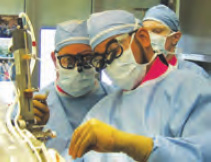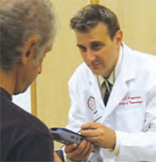The Process: How Long Does DBS Take?
Deep Brain Stimulation (DBS) is an ongoing therapy. Not a single surgical event. The therapy process occurs in four basic phases:
1. Candidacy Assessment
There are usually a couple of meetings between the prospective candidate, the neurosurgeon, referring neurologist, and clinical neurophysiologist before the formal team assessment.
2. Surgical Procedures
T he surgeries are carried out in the next few months and occur in two stages
separated by a week. During the first stage, the neurosurgeon implants
the stimulating leads, guided by the neurophysiologist, and taking up
to 7 hours.
he surgeries are carried out in the next few months and occur in two stages
separated by a week. During the first stage, the neurosurgeon implants
the stimulating leads, guided by the neurophysiologist, and taking up
to 7 hours.
In this surgery, the patient is sedated and lightly anesthetized, but awake enough to assist in guiding the placement, through their responses to test stimulation. During the second stage, the surgery is shorter and carried out under full anesthesia, like most standard surgeries. At this stage, the IPG is implanted and the cables are connected to the stimulating leads.
3. Initial Programming
 Within two weeks of recovery, the initial screening of contacts and programming
occurs. For the next half year, the patient will continue to meet with
the clinical programmer and neurologist, who together will optimize the
stimulation settings of the IPG and the patient's medication.
Within two weeks of recovery, the initial screening of contacts and programming
occurs. For the next half year, the patient will continue to meet with
the clinical programmer and neurologist, who together will optimize the
stimulation settings of the IPG and the patient's medication.
4. Long-Term Maintenance
From then on the patient will meet with the programmer semi-annually or annually to ensure the IPG is working well and to make fine adjustments coincident with changes in the disease or patient's medications.



